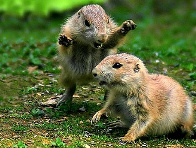
Rodents
Rodents (Rodentia) are a diverse group of mammals that consist of more than 2000 species.
Species can be arboreal, fossorial (burrowing), or semiaquatic. Well-known rodents include mice, rats, squirrels, prairie dogs, porcupines, beavers, guinea pigs, hamsters, and capybaras. Other animals such as rabbits, hares, and pikas were once included with them, but are now considered to be in a separate order, the Lagomorpha.
Most rodents are small animals with robust bodies, short limbs, and long tails. They use their sharp incisors to gnaw food, excavate burrows, and defend themselves. Most eat seeds or other plant material, but some have more varied diets. They tend to be social animals and many species live in societies with complex ways of communicating with each other. Mating among rodents can vary from monogamy, to polygyny, to promiscuity. Many have litters of underdeveloped, altricial young, while others have precocial (relatively well developed) at birth.

Seals and Sea Lions
Seals and sea lions (Pinnipedia) are a group of
semi-aquatic marine mammals that include sea lions, fur seals, true
seals and the walrus. Members of this group are also known as the
fin-footed mammals and are characterized by clumsiness on land but great
agility in the water.
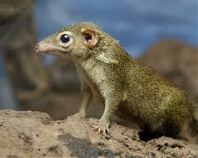
Treeshrews
Tree shrews (Scandentia) are a group of arboreal and terrestrial mammals
that includes Madras trees shrews, northern tree shrews, large tree
shrews, painted treeshrews and many others. There are about 19 species
of mammals alive today.
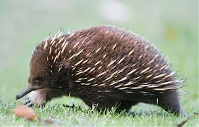
Monotremes
Monotremes (Monotremata) are a unique group of mammals that lay eggs
instead of giving birth to live young like other mammals such as
placental mammals and marsupials. Monotremes include several species of
echidnas and the platypus.
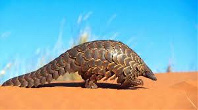
Pangolins
Pangolins (Pholidota) are a group of mammals that includes the Indian
pangolin, Chinese pangolin, Sunda pangolin, giant pangolin, tree
pangolin and others.
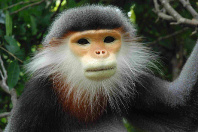
Primates
Primates (Primates) are a group of mammals that includes 356 species.
Primates include prosimians, monkeys and apes. Primates inhabit tropical
regions throughout Central America, South America, Africa, Madagascar
and east and southeast Asia. They form complex social units and many
species possess adaptations suited for life in the trees, including
dextrous hands and a prehensile tail.
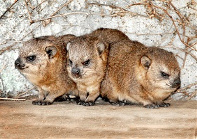
Hyraxes
Hyraxes (Hyracoidea) are a group of mammals that includes the rock
hyrax, the yellow-spotted hyrax, the western tree hyrax, and the
southern tree hyrax. There are 8 species of hyraxes alive today.
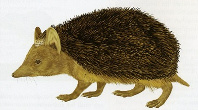
Insectivores
Insectivores (Insectivora) are a group of mammals that include
hedgehogs, moonrats, shrews, and moles. Insectivores are generally small
mammals with nocturnal habits. There are about 365 species of
insectivores alive today.
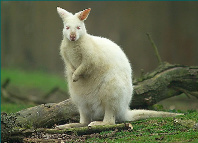
Marsupials
Marsupials (Marsupialia)
are a group of mammals that give birth to their young at an early stage
of their development. After their birth, the young crawl up the
mother’s body and into the safety of her marsupium—a pouch located on
the mother’s abdomen. Once inside the marsupium, the baby attaches to a
nipple and nurses until it is large enough to leave the pouch and better
fend for itself in the outside world.
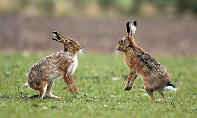
Hares, Rabbits, and Pikas
Hares, rabbits, and pikas (Lagomorpha) are small terrestrial mammals
that can be found in a diverse range of habitats on every continent
except Australia and Antarctica. Lagomorphs have short tails, large
ears, eyes that are positioned high on each side of the head, and
narrow, slitlike nostriles that they are able to close completely.
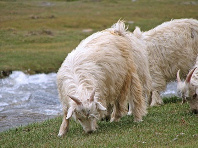
Even-Toed Hoofed Mammals
Even-toed hoofed mammals (Artiodactyla) includes pigs, hippopotamuses,
pronghorn, deer, camels, giraffe, okapi and cattle. There are 225
species of even-toed hoofed mammals alive today. The articles listed
below provide information about the characteristics, classification and
evolution of even-toed hoofed mammals.

Odd-Toed Hoofed Mammals
Odd-toed hoofed mammals (Perissodactyla) includes horses and their
relatives, rhinoceroses, and tapirs. There are 19 species of odd-toed
hoofed mammals alive today. The articles listed below provide
information about the characteristics, classification and evolution of
odd-toed hoofed mammals.
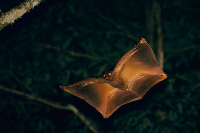
Colugos
Colugos;(Dermoptera) are large, tree-dwelling placental mammals that
glide using a flap of skin that forms a sail-like surface between their
outstretched legs. Only two species of colugos remain today, the
Philippine flying lemur and the Sunda flying lemur. Colugos are
nocturnal herbivores that feed on leaves, shoots, flowers and fruits.
Colugos inhabit the tropical rainforests of Southeast Asia. Despite
being placental mammals, colugos give birth to their young when they are
quite undeveloped and in this respect the resemble marsupials.
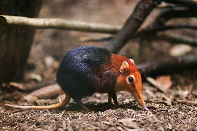
Elephant Shrews
Elephant shrews (Macroscelidea) are small, long-nosed insect-eating
mammals native to Africa. There are about 12 species of elephant shrews
alive today including the golden-rumped elephant shrew, checkered
elephant shrew, four-toed elephant shrew, short-eared elephant shrew,
dusky elephant shrew and several others. The classification of elephant
shrews has often been a matter of debate. In the past, elephant shrews
have been classified as close relatives of hoofed mammals, hares and
rabbits, insectivores, and treeshrews.

Elephants
Elephants (Proboscidea)
include two groups, African elephants and Asian elephants. There are
two species of African elephants, the forest elephant and the savanna
elephant. There is only one species of Asian elephant. The most notable
characteristics of elephants include their large size, massive skull and
long muscular trunk. Elephants first arose during the Eocene. They
diversified into as many as 150 different species that inhabited Africa,
Europe and the Americas. The closest living relatives to the elephants
are the sirenians.

Bats
Bats (Chiroptera) are the only group of mammals that have wings.
Although some other groups of mammals, such as flying lemurs, are able
to glide using skin membranes, only bats are capable of true flight.
There are 997 species of bats alive today. Bats include two basic
groups, the megabats and microbats. There is some controversy over just
how closely the megabats and microbats are related, with some scientists
arguing that the two groups are differ markedly in brain structure. The
closest living relatives to bats are colugos, followed by tree shrews
and primates.
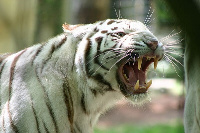
Carnivores
Carnivores (Carnivora) are a group of mammals that consists of about 250
species. Carnivores first appeared during the Cenozoic, after the
decline of the dinosaurs. The earliest carnivores were weasel-like
creatures. During the Palaeocene, carnivores diverged into two lineages,
feliforms and caniformes. Feliforms include cat-like carnivores such as
hyenas, cats, civets, linsangs, mongooses and the fossa. Caniforms
include dog-like carnivores such as dogs, red pandas, wolves, foxes,
coyotes, bears, racoons, mustelids, aardwolves and wolverines.
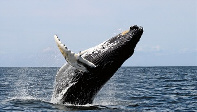
Cetaceans
Cetaceans (Cetacea) are marine mammals that include toothed whales and toothless, filter-feeding baleen whales. There are about 88 species of cetaceans. Toothed whales are the more diverse of the two groups of cetaceans, with about 73 species. Toothed whales include dolphins, porpoises, sperm whales, beaked whales and killer whales. Baleen whales include about 15 species such as right whales, bowhead whales and rorquals. Cetaceans are highly-specialized mammals with sparsely-haired bodies, flipper-like forelimbs and reduced back limbs located within the body wall.
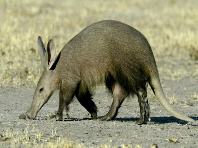
Aardvark
Aardvarks (Tubulidentata) are burrowing, nocturnal placental mammals.
There is only one living species in the group. The aardvark has a long
snout, arched back and coarse fur. Their diet consists of primarily ants
and termites, which it procures by tearing open the insects’ nests with
its long claws. Aardvarks inhabit savannas, woodlands and grasslands in
sub-Saharan Africa, a range that extends from southern Egypt to the
Cape of Good Hope. The closest living relatives to the aardvark includes
cetaceans and the even-toed hoofed mammals.
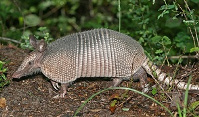
Armadillos, Sloths and Anteaters
Armadillos, sloths, and anteaters (Xenarthra) are a group of placental
mammals that includes anteaters, armadillos and sloths. Anteaters are
native to South America and one species, the armadillo, inhabits the
southern United States. There are about 29 species of anteaters and
their relatives alive today. Anteaters and their relatives are diverse
in form. They are notable for the unique joints in their backbone which
provide them with the strength and support they need to dig and burrow.
The closest living relatives to the anteaters and their relatives are
the pangolins.
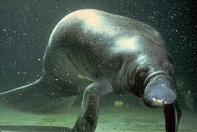
Sirenians
Sirenians (Sirenia) are a group of group of aquatic mammals that
includes dugongs, manatees and sea cows. There are 4 species of
sirenians alive today.





















